
Poverty Point , LA
Circles
This city predates agriculture on the continent, and is located in Louisiana. The circular design is functional in many ways. There are six semi circular mounds that remain in concentric rings. The avenues that cut through the rings out of the city correspond to setting points of the sun on solstice days. Houses were constructed on the circular mounds in rows. No evidence of maize has ever been found on the site which covers hundreds of acres.
As many as ten thousand people may have gathered here during the Summers. The erosion has taken away some of the structure over thousands of years of flooding. They had clay, little stone, and very little wood to use in that area at the time of habitation.
The huge mound is seven stories high and is in the shape of a bird. There was little fire wood in the area, and clay briquets were heated in central fires and carried in clay pots to floor recesses in homes, and were used for cooking. Thousands of these decorated clay pieces, adorned with clan symbols are exhibited at the site in a museum on site. I saw dozens made in the shape of little owls. Red hot they would have held heat for a long time.
Ted Sojka
Art Educators of iowa
PS We arrived on a day when the temperature was near 95 degrees and the humidity somewhere between sweat and swimming. I crossed the six ridges of semi …
Keep reading 0 comments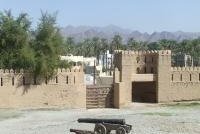
The oldest publicly-accessible evidence of ceremonial culture in North America -- and the largest earthwork in the world (I think) - and it's NOT a World Heritage Site? That simply does not make sense. Unlike most other earthwork sites, this one still sites in a landscape much like it did at it's peak, enabling visitors imaginations to form an idea of life for these moundbuilders. Not only is the main site still mostly intact, the outlying mounds are as well -- another rarity among earthworks. Group it with the even more ancient nearby Watson Brake, in university hands, and the mounds on the Frenchman's Bend Golf Course, and created is a prime example of the roots of humanity in North America.
Keep reading 0 comments
For anyone wanting to experience the “high Arctic”, Svalbard is the place to go. With the right sort of trip and a bit of luck you will get above 80 degrees north (only a few Russian islands and the furthest parts of Ellesmere Island and Greenland extend that far) and gain excellent views of the mammalian, avian and plant life of the Arctic.
In common with most visitors, we went to Svalbard on a ship-based cruise (2004). I personally wouldn’t want to go on a vessel of bigger than 50 passengers. This permits all to be offloaded on no more than 5 zodiac craft which is more than enough when following wild-life by water or when disgorging people ashore. Economic realities and new environmental regulations for ships in both Svalbard and Antarctic waters (most ships operate in both at the appropriate time of year) are tending to push their size up to those carrying c100 passengers unfortunately – far better than the 500+ boats but too many people in my view for a good experience. July is perhaps the optimum month (and 24 hr sunlight of course!) but voyages which promise a circumnavigation of Spitzbergen and access to the remoter east coast are likely to meet too much sea ice in the Hinlopen passage until late August.
We saw 14 polar bears on our 1week trip with excellent and extended views in natural circumstances (photo). We haven’t been to Churchill, Canada which would appear to offer a better …
Keep reading 0 comments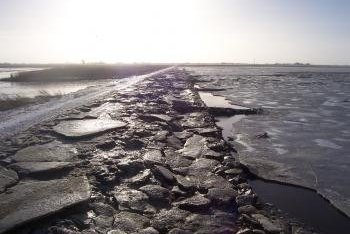
“I’m going to visit some mudflats!”
“Why?” my colleagues asked, as they seem to delight in eking out the weirder destinations that visiting World Heritage Sites takes me. Therefore they had great fun when I unveiled my plans for New Years day 2011.
“They are a World Heritage Site”
“Why?”
“erm...[googling]...they seem to be home to 6.1 million migratory birds”
“Wow, will you get to see them”
“erm, probably not, I don’t think mid winter is the main time for them.”
“OK, so which part of the National Park are you going to visit”
“I found a Lighthouse opposite the container port”
“Doesn’t sound to Natural why are you heading there?”
“It looks walkable from the ferry port at near Bremerhaven”
“Walkable, how far?”
“About 12km round trip, probably in the snow I guess”
“Wow you must really like birds”
“No, not really I don’t have much interest in them”
“...”
“I told you it is a World Heritage Site right?”
And so that is how I planned my day and that is how it turned out. To walk off the excesses of the festive period I took a stroll to Langlütjen I on New Year's Day 2011.
To my surprise there were a few birds flying around near the sea, I saw some Geese (Barnacle?) Ducks (Eiders?) and something that I think may have been a Curlew, but as I said, birds really are not a speciality of mine.
I actually enjoyed my walk through the flooded grass lands …
Keep reading 0 comments
Early one morning in May 1999 I arrived, by overnight bus from Shiraz, in Shush, the town in Southern Iran nearest to Tchoga Zanbil. There it was very easy to find a taxi driver prepared to take me the 40kms or so, through semi-desert though once fertile country, to this site (prices in Iran were very low at the time of my visit).
The heart of this site is an impressive pile, of mud brick construction, said to be the largest surviving ziggurat in the world. Now, more than 3000 years after it was built, having been sacked by the Assyrians in 640BC and having spent most of the time since then buried in the desert sands it stands about 25m high. It has, however, been calculated that it was once more than twice this height having lost 2 of its 5 storeys over the years.
Some visitors might feel that some of the restoration has been a bit over enthusiastic, with large areas of obviously new brickwork on the lower parts of the structure, a process which was being continued, at a fairly gentle pace, when I was there.
I was surprised to find that I was allowed to climb all over the Ziggurat which stands on a low plinth measuring 105m on each side. There are the remains of a number of other structures including a large surrounding wall and others which were once royal palaces. I was particularly impressed by a water supply and drainage system which …
Keep reading 0 comments
Bahrain Fort is located on the outskirts of Manama, with good views over the sea and the highrise buildings of the Bahraini capital. To my surprise, there were dozens of other European tourists around. Mostly Germans, busloads full of them, maybe they came from a cruise ship. They however did only a quick tour of the site, so I had most of it to myself anyway. I started with a circular walk outside of the walls. The edges of the terrain are covered with some pretty palm groves, which have been in use since ancient times.
The fort itself looks almost over-restored. Compare my photos for example with the one taken by Solivagant in 2005 (see his review below). It seems that it has been white-washed during the final phase of restoration. The fortifications look like they always do (I do like the straight lines of the walls and the shape of the turrets). The interior holds a remarkably large open courtyard. The surrounding structures are in ruins and one can only guess what they were used for.
There's a small museum on-site, that displays a lot of items (pottery, stamp seals) that I had already seen earlier in the day in the more extensive National Museum of Bahrain. It was only there that I found out that there is an entrance fee to the Fort - after arriving I had just walked up and around it without being bothered by anyone (the ticket lady hides in the …
Keep reading 0 comments
The Tumuli fields are the most distinguishable historical landmarks of Bahrain. There are a number of them in the northwest of the island. I visited them while driving around this small country for a day, taking in its first oil well and Riffa Fort as well.
The Tumuli field at Hamad was the first one that I encountered - it's located next to the main road. Somehow I had thought of it as a remote archaeological site, but this field (and the others that I saw) is right in the middle of a town. Think of the size of a football pitch or a small park. And then it's just sandy hills with small rocks as far as you can see. Unfortunately, there are no interpretative signs on site.
The bigger field at A'Ali I even found full of garbage and litter. I don't think that they are being worked into proper tourist sites.
The National Museum of Bahrain has good displays about these tumuli. There are so many of them left (170000!) that once it was even thought that people from the Arab mainland were buried here (and that Bahrain was an island solely for the dead). But statistics proved that there were tumuli accounting for 1 dead every 3 days, leading to a local population of about 4500 inhabitants.
Keep reading 0 comments
I loved it! The Shaikh Isa Bin Ali House is the single most impressive sight that I have encountered in Bahrain. As I was a bit underwhelmed by the other "attractions" of the island (the forts, the tumuli), this is the kind of site that I really like. It is centered on a few streets in South Muharraq. Here you'll find glimpses of another era when the Bahraini lived from the pearl trade, and before all that came with the oil. The narrow streets have a slight resemblance to Zanzibar.
I started with a visit to the Shaikh Isa Bin Ali House - this was used as the seat of government in the late 19th century (Muharraq was Bahrain's capital at that time) and the residence of the ruler. It is a complex consisting of 4 separate quarters, almost a labyrinth to walk in. The decoration of the doors and windows is wonderfully done. The house also has the best example of a Wind Tower, a local implementation of early airconditioning.
Closeby are the Siyadi House and adjacent mosque. The house unfortunately is closed to visitors - I wonder if it will open again after the area has become a WHS. It does look stunning enough from the outside though.
I read in the National Museum that they plan to connect 16 or 17 historic buildings in Muharraq with the dhow harbour via a 3km long heritage trail. When I visited I did not find any clear …
Keep reading 0 comments
On my first visit, everything was quiet on that Sunday morning. The locals were locked up in church, the (foreign) tourists were back home again. That made the site the least tourist one that I have visited so far. And no entrance fee!
The landscape resembles a classical Dutch painting. Winter in Holland, or something like that. But do not try to look behind this postcard-like picture, because then the industrial areas come in sight again.
My second visit was on a weekday in December. It was freezing cold, but I like the stroll on this path along the mills. There were a couple of other people around, some joggers, some people taking photos. On my way out I encountered a Japanese tour group that only had a quick look at the first couple of windmills and then went back to their bus which had kept its engine running.
The walk to the last mill, at the end of the second row that stretches out to the left, takes about half an hour. Usually, there are a lot of waterbirds here, but the only noise I heard now was the rustling of the reeds (at first I thought there were mice!). The windmills are divided into 2 groups by their way of construction, and there's an odd one out (a water mill). Simple signboards tell their story.
Keep reading 0 comments
I think I found the clues to beat the crowds here at Versailles:
- visit in the low season
- book your ticket beforehand on the internet and print it
- stay overnight in the pleasant town of Versailles
- be at the gate a little before opening time (9 a.m.)
- go fast at the first rooms (to shake off other early birds)
I just did all that on a Sunday morning in December. There were about 40 people waiting at the gate at 9 a.m., including a Chinese tour group. I beat them all at the start, was the first to go in that day and had the rooms almost to myself.
The gardens open already at 8 a.m., and I wandered around them a bit before visiting the interior. It was quite foggy, but that gave an extra mysterious touch to the surroundings. The grounds were still muddy and slippery from the heavy snowfall that had struck the Paris region last Wednesday (and even caused the Palace to close for half a day). A large golden sculpture by the Japanese artist Takashi Murakami attracts a lot of attention at the moment. It is part of a temporary exhibition, his works are also in the interior of the palace.
What did I think of my visit? The bottom line of all the other reviews below I found to be true: the Hall of Mirrors and the Gardens are the most memorable parts. I …
Keep reading 0 comments
This was my 3rd WHS on the day: after having visited Provins and Fontainebleau I had a couple of hours left before it would get dark. So I drove on to Chartres to see its famous cathedral, knowing that I would not easily go there on a separate visit. I think I have seen enough Gothic cathedrals for the rest of my life.
Both Provins and Fontainebleau were almost deserted when I visited earlier this day, but that, unfortunately, wasn't the case for Chartres. It took me over half an hour to find a parking spot in the city center, which was overrun with Christmas shoppers.
Fortunately, the Cathedral is not hard to find. It's a big church in a city of 40,000 inhabitants. But just like Ian Cade states in his review below, I was not really impressed. It is large, but so are most of the other European cathedrals on the List. The facade is undergoing restorations at the moment, as is part of the interior.
The cathedral is best known for its stained glass windows. As it was already late in the afternoon when I visited, there was not enough light left to let these windows really shine. The rest of the cathedral is, well, .. a cathedral with cathedral things.
P.S.: Outside I noticed a sign that Chartres also is a station on the Road of St. James to Santiago de Compostela. However, it is not one of the elements of the …
Keep reading 0 comments
For some reason I had anticipated finding something completely different: my navigation brought me right into the center of the town of Fontainebleau, while I had expected to visit a hunting castle somewhere in a forest. At first sight, the castle looks quite small and disappointing too.
I wandered the grounds and part of the gardens. There are some nice black sculptures, but nothing too exciting, especially in winter. There were only a couple of other visitors around. So few of them that I wondered if the interior would be closed - I visited on a Saturday, around lunchtime and had expected crowds.
All changed when I paid my 10 EUR entrance fee to visit the interior of the castle. Maybe all visitors were hiding there, escaping the winter weather? No! I really was about the only person around. Most of the rooms I had to myself. This rare occasion turned it into a memorable visit. I don't think I have ever enjoyed a European castle as much as this one.
I used a pretty good audio guide to explain the castle. Each room has signs too in French and English. One of the best is the Gallery of Francis I, a covered passageway that he had built for himself. Its walls are adorned with beautiful frescoes. Another great room is the Ball Room (see large photo above). There's a room completely in Rococo style, rooms full of gobelins, ornate bedrooms. Almost at the end of the …
Keep reading 0 comments
I visited Provins on an early Saturday morning in December. I left my car at the large parking lot just outside the gates of the Upper Town. They can handle a lot of visitors here, but all was quiet now and the parking fee was not collected. I had read on the town's website that there would be a Christmas market today (a 21st century fair?). But when I crossed the main square in the Upper Town around 9.30 a.m., people were only just starting to build up their merchandise. As far as I could see, it would become a medieval-themed Christmas market.
I walked on, to the Caesar Tower and the Church of Saint Quiriace. They are the landmarks of Provins, situated on top of a hill and visible from afar. Unfortunately, the Tower was still closed too. It is a magnificent sight because of its uncommon shape: an octagonal donjon on top of a square base.
Approaching the nearby Church of St. Quiriace, I was met by 3 camels. They were led into the church to become part of an elaborate Christmas stall (or at least that was my guess).
From behind the church, the road winds down to the Lower Town. This feels like a common French town, but it is quite nice. It has 12,000 inhabitants, so it does not take long to explore. The storage areas that are named in the AB evaluation can be visited - however not on a Saturday …
Keep reading 0 comments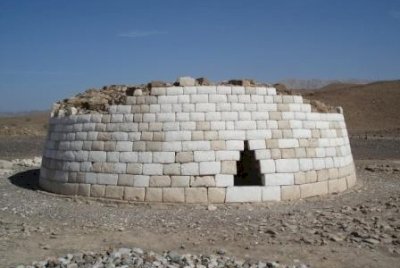
Site visited in December, 2010. Just arrived from Oman, seeing all their World Heritage Sites. It is not so bad with accessibility of Bat - there is a sealed road directly from Ibri via Ad Diriz. On a way from Ad Diriz there are already some marked excavations area (no named but at least there are plates). Just before entering Bat village you should turn left (road to Wadi Al Ayn). Bat archeological sites lies just 800 meters on the left. If you don't find it ask locals for UNESCO sites - the majority of them should know. Some structures extend also on the right side of the road. Total area is partly fenced, marked, graves or I should say structures are partly restored. One of those partly restored graves in Bat archeological site you can see on the photo.
For Al Ayn which is by far the most spectacular Unesco place in whole Oman, you can use the same road to Wadi Al Ayn - accessable but poor - but it is better to go Al Banah (watch for the signposts) and from there go to Al Ayn towards the road Ibri - Bahla. This road is now completely asphalted. If you enter Al Ayn just watch the hills - you cannot miss the graves.
Keep reading 0 comments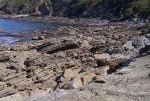
My Name is Chidi Nzeh, a tourism student of National Open University of Nigeria, Akoka lagos study centre. I visited idanre hills and was full of myself and my country Nigeria.though i was in a sober mood, reflecting how our world class natural endoement are being wasted. no wonder the tourism professionals said that " Tourism in Nigeria is still at it's infancy stage" We went on a field trip, students were excited seing the miracie of nature and the exhibition of God's power of creativity, but to me i was wondering why the destination were uncared for. You may not get what i am talking about. the hills may excite you but the environ matters a lot. God has done his by blessing us with the hills he can not come to beauty the environ. Federal govt., State and local please take note.
Keep reading 0 comments
I visited the ruins at Takht-e-Bai in 1968 when I was 21 years old and in the USAFSS stationed in Peshawar Pakistan (the same base Gary Powers departed on his ill-fated U-2 flight over Russia in 1960). Takht-e-Bai is one of my fondest memories and and unforgettable experience. Would love to visit it again, but times are not so friendly there now.
Keep reading 0 comments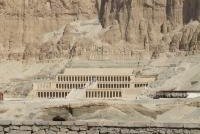
Idanre hill is a fascinating place and relatively easy to access. Its deserted hilltop site once contained wonderful wooden statue posts, photographs of which were submitted to Nigeria's National Commission of Museums and Monuments in the early 1990's, before that regime's role in dealing with the nation's antiquities was fully appreciated. Within a few months, the statues had gone. Idanre Hill is a splendid walk amidst beautiful hills but, although included in the sites considered, it was not included in the original Tentative List because it was not universally unique.
Keep reading 0 commentsThe carved stone monoliths of the Alok/Ikom area were made of basalt rocks with fine carvings of eyes, mouths and navels, then often laid out in circular henges for ceremonial usage. Sadly, the spate of looting over the last two decades has removed many; and a recent industry makes granite replicas (purporting to be originals) - with covert sales reaching as far away as South Africa and the USA.
Keep reading 0 commentsProfessor Ade Obayemi, the only Director General of Nigeria's National Commission for Museums and Monuments to drive away in an old VW Beetle and not a new Mercedes, once requested an ethnographer to go and work at Kwiambana ... but she refused because lions lived in the hills eight km away. Kwiambana walled town lay close to other walled towns in a once densely settled area well east of Zaria, which has a Kuyanbana gate; but the upheavals of the C19th led to depopulation of the region around. One needs to travel by okada (motorbike taxi) and cross one river by foot to reach the site.
Old Ningi was formed of various refugee groups in the mid C19th and lay amidst wild volcanic hills. It raided far and wide, travelling on little-used paths. Its steep-sided Lungu valley fortress was composed of three cross-dykes, the outermost of which was composed of a 2m high mud wall atop a metre high stone base, which acted inside as a parapet. It L-shape close to the main gate provided such effective cross-fire that the wall was never breached. For over half a century, it resisted the surrounding emirates and brought the Bauchi slave-trading economy to its knees. Only treachery revealed a hidden water path for the British to by-pass these walls and capture Old Ningi in the early C20th. A pack of spotted hyenas now live along that path; and vicious wait-a-bit thorn covers much of the old settlement; and the visit by okada …
Keep reading 0 commentsSurame is Africa's largest stone construction, many time larger than Great Zimbabwe; and it deserves to be better known. Built in the C16th by the Songhai under Kanta, the stone walls were once strengthened with mortar, as were those at its satellite town of Gungu and another Songhai town, Banga. The large central area contains Kanta's house and well and is pierced by seven gates. Three concentric enclosures surround this inner wall; and there are three other much small enclosures appended. This erstwhile capital was abandoned after only a couple of centuries and, although its bleak wilderness site suffers from sheet erosion, late stone age tools, sherds and tobacco-pipe fragments have been noted. It is one of many sites well worth visiting in Nigeria if one is prepared to walk its imposing walls.
Keep reading 0 comments